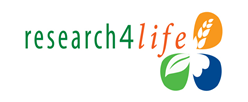Carotene Synthesis Changes of Rhodotorula Aurantiaca Indicator Yeasts in the Presence of Copper (II) Salts
DOI:
https://doi.org/10.15330/jpnu.9.4.25-32Keywords:
bioindication, aquatic ecosystems, yeasts, pigments, carotenoids, Rhodotorula aurantiacaAbstract
Rhodotorula aurantiaca yeasts are ubiquitous microorganisms found in water, soil, plants, etc. Since the main requirement of an indicator organism is the wide occurrence in nature, this species can be an informative bioindicator of the ecological state of the environment. The aim was to study the influence of Cu (II) compounds on the color of carotenoid pigments intensity of two Rh. aurantiaca strains (Y-1193 and Y-1195).
Rh. aurantiaca Y-1193 strain was more susceptible to the compounds of Cu (II) than Rh. aurantiaca Y-1195. Thus, due to the action of Copper (II) chloride in a concentration of 100 mg/dm3 and Copper (II) sulfate in a concentration of 200 mg/dm3, the synthesis of pigments in Rh. aurantiaca Y-1193 was inhibited, which was 2 and 2.5 times, respectively, lower than concentrations at which the Rh. aurantiaca Y-1195 strain lost its ability to form carotenoid pigments. The most toxic effect on Rh. aurantiaca yeast was caused by the compound Cu(NO3)2. There was no cell growth at a concentration of 200 mg/dm3 of Cu2+ ions, and the concentration interval between the loss of pigments and growth retardation was also not detected. dE (the difference in the intensity of pigment accumulation of microorganisms) yielded a greater value when the difference between control and experimental yeast samples was bigger. Thus, for intensively pigmented colonies, this index varied from 7.4 to 9.6 c. u., however, for non-pigmented colonies under the influence of Copper (II) compounds, dE was in the range from 19.8 to 21.5 c. u. To confirm the effectiveness of using the scale for visual assessment of pigment accumulation for studied microorganisms, the quantitative content of carotenoids in Rh. aurantiaca Y-1193 strain was determined by spectrophotometric methods. When comparing the visual assessment of pigment accumulation in yeast and the concentration of carotenoids in cells, a strong correlation was established (r = 0.9). The dependence is statistically significant (p<0.05). Therefore, the carotenogenic culture of Rh. aurantiaca Y-1193 can be recommended for use in bioindication studies of water contamination with Cu (II) compounds. The prospect of further research is to study the influence of other compounds of the I and II hazard classes on the intensity of pigment accumulation of yeasts in the Rhodotorula genus.











